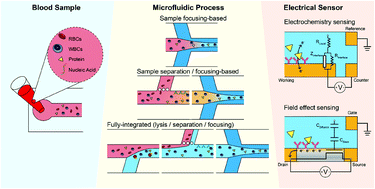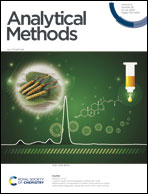Recent advancements in microfluidics that integrate electrical sensors for whole blood analysis
Abstract
Whole blood analysis reveals crucial information about various physiological and pathological conditions, including cancer metastasis, infection, and immune status, among others. Despite this rich information, the complex composition of whole blood usually required multiple sample preparation steps to purify targeted analytes. Traditionally, whole blood preparation processes, including centrifugation, lysis, dilution, or staining, are usually manually operated by well-trained technicians using bench-top instruments. This preparation can require a large blood volume and cannot be directly integrated with detection systems. Recently, various studies have integrated microfluidics with electrical sensors for whole blood analysis, with a focus on cell-based analysis, such as cell type, number, morphology, phenotype, and secreted molecules. These miniaturized systems require less sample and shorter reaction times. Besides, the sample processing and analysis can be fully integrated and automated with minimal operations. We believe these systems can transfer the current whole blood analysis from hospitals or laboratories into clinics or home settings to enable real-time and continuous health condition monitoring in point-of-care settings.



 Please wait while we load your content...
Please wait while we load your content...